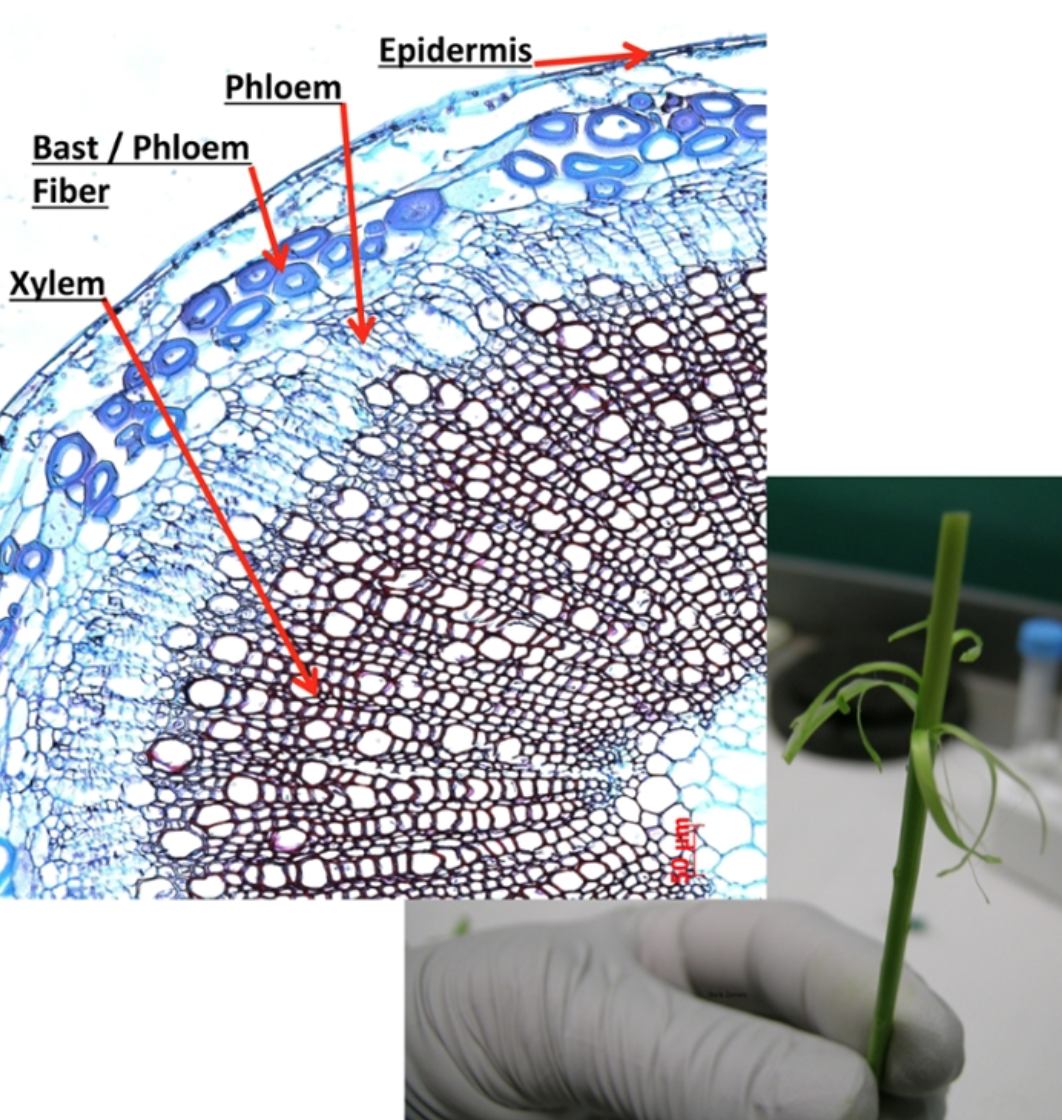Biofuels
Hemicellulose is a natural sink of carbon that can be used in biofermentors for biofuel production. The major goal of our project that is carried out in collaboration with the labs of Dr. Curt Wilkerson and Dr. Ken Keegstra at MSU is to understand the process and regulation of hemicellulose biosynthesis in sufficient detail that the resulting information can be used to manipulate the levels and composition of hemicellulose in the cell walls of biofuel crops. We are pursuing multiple strategies to achieve this goal. For example, hemicellulose components are largely synthesized in the Golgi. To better understand how hemicellulose is produced and deposited, we have used proteomics and isolated the proteome of Golgi-enriched fractions in developing cotton fibers. This approach has led to the identification of numerous proteins with unknown function that we are now functionally characterizing in our lab. We are also isolating hemicellulose-rich cells from lignin-rich cells from flax stems to compare their enzymatic content and identify new proteins involved in hemicellulose biosynthesis. We expect to translate the information that we are gathering with our approach into crops and select plants with high hemicellulose content.

Figure 1. Flax fiber cells high in hemicellulose. Bright field image of cross section of flax stem. Phloem fibers of flax (Linum usitatissimum) are rich in thick cell walls unlike the thin walls of xylem that are composed mostly of lignin. The thick cell walls of phloem fibers consist of cellulose and hemicelluloses. Hemicelluloses are synthesized at the Golgi and are then secreted to the cell wall. Because of this, flax offers a great synchronized system to understand what transcription factors regulate the cell wall. Fibrous peels and lignified core of flax can easily be separated by hand.